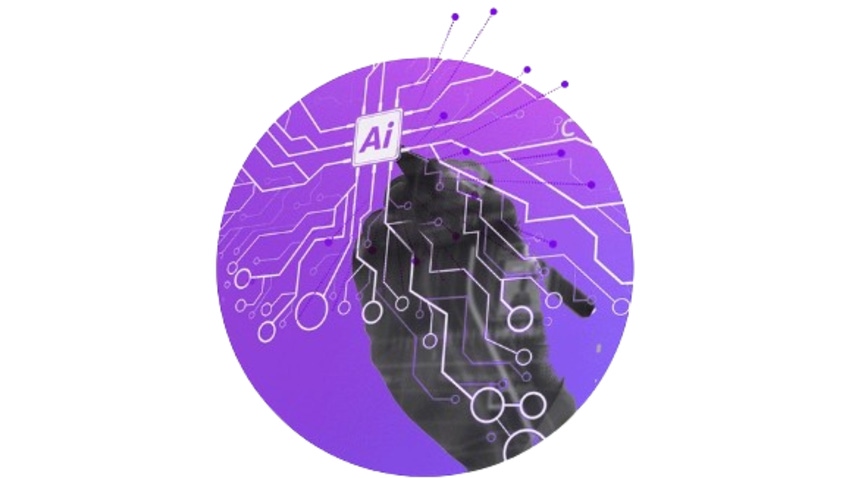Microsoft Wants to Compress the Next 200 Years of Scientific Discovery into the Next 25

On 21 June 2023, Microsoft Azure Quantum made several announcements in support of a new aspirational goal to “compress the next 200 years of scientific discovery into the next 25.” The first announcement introduced Microsoft Azure Quantum Elements, a new service offering that leverages generative AI, high performance computing (HPC), and growing capabilities in quantum computing (QC) to provide scientists and researchers with system level tools to dramatically speed up and reduce the complexity of using computational scientific approaches to solving hard problems in chemistry and materials science. The second announcement provides further color on the company’s progress in developing topological qubits as robust hardware substrate on which to build large scale, fault tolerant QCs.
Azure quantum elements
Perhaps the most interesting aspect of Azure Quantum Elements is the ChatGPT4-driven natural language interface: “Copilot in Azure Quantum.” Like the Copilot assistance Microsoft is integrating with other applications, Copilot here will help both with answering questions about quantum computing and suggesting/explaining code segments to solve computational problems posed to it in natural language. Both functions should help speed up the workflow of computational chemists and democratize in silico chemistry and materials sciences research, especially when using quantum computing resources, to a wider scientific audience.
More prosaically, Azure Quantum Elements continues Microsoft’s strategy of tightly coupling QC, AI, and HPC technologies. The Elements platform comprises a collection of open-source and specialized tools for automating key computational research functions and integrates tools for working with the current set of third-party provided QCs from vendors including IonQ, PASQAL, Rigetti, QCI, and Quantinuum. Importantly, the Elements training data includes specialized models for chemistry; this informs the output of Copilot in Azure Quantum, as well.
Elements differentiates from other analogous offerings targeting the quantum chemistry space with its natural language interface, access to multiple different NISQ-era QC backends, and seamless interface into the rest of the Azure cloud portfolio, especially for AI and HPC resources. However, that last point is also a challenge for Microsoft: Omdia knows of one Fortune 100 company that will not work with Microsoft, for example, because it will not allow Microsoft access to its proprietary data. Many corporate customers want hybrid and multi-cloud flexibility as a basic IT architectural matter and may view Elements as too restrictive in its tight coupling into the larger Azure portfolio.
Majorana Zero Modes
Microsoft is effectively hedging its risky topological QC bet with its Elements offering – even if the company cannot develop a fault tolerant topological QC, it is establishing a firm position for itself in other areas of the QC value chain. At the moment, however, Microsoft’s efforts in developing topological qubits look promising: the second major announcement made was the publication of peer-reviewed research results showing the detection of “Majorana Zero Modes” in a controllable electronic device.
Demonstrating this result is a huge achievement, but Microsoft is the first to admit there are many steps between there and a fault-tolerant QC. Still, Microsoft made an intriguing statement during its announcement webcast: it is confident that it will achieve its vision of a quantum supercomputer “in years, not decades.” In other words, Microsoft is positioning its efforts as fully in line, even aggressively so, with overall industry conjecture that it will take the industry about a decade or longer to achieve large scale, fault tolerant QC using some qubit modality. Given that several competitors already have QCs with hundreds of working (albeit noisy) qubits, this is a remarkable statement of confidence. By way of comparison, Intel is far more conservative in estimating that its silicon spin qubit approach, leveraging the decades and billions of investment dollars that the semiconductor industry has spent on R&D for classical chips, will still take over a decade to result in large scale, fault tolerant silicon spin qubit QCs.
Interestingly, Microsoft’s approach to topological qubits (sometimes referred to as “engineering the material”) may end up having a practical advantage over the approach to topological qubits recently announced by Quantinuum and Google Quantum AI (sometimes referred to as “engineering the waveform”), in that it appears Microsoft will be able to layer traditional quantum error correction (QEC) codes on top of its physically robust topological qubits. In contrast, for Quantinuum and perhaps Google Quantum AI, the creation of, essentially, “virtual” topological qubits as an emergent property on top of traditional trapped ion and superconducting circuit qubits is, in itself, an implementation of QEC, used in place of additional QEC coding. So, the question becomes: does Microsoft’s approach of starting with robust qubits and adding QEC codes on top lead to an overall lower logical error rate than the other approach of starting with (relatively noisy) traditional qubits and using a “virtual topological qubit” in place of traditional QEC codes?
Compressing the next 200 years of research into the next 25
In a sense, Microsoft is taking a “swing for the fences” approach to the development of its own QC. The company is firmly in the camp that believes that quantum advantage only occurs when QC offers a superpolynomial speedup over classical computing at an algorithmic level. This is what Omdia refers to as “quantum tractability advantage” – the point at which QCs enable solutions to problems that are simply intractable to classical computing. Leaving aside the debate about the several ways “quantum advantage” can be defined and assessed, Microsoft’s aspirational goal is laudable.
The company posits that quantum chemistry and materials science may be the only areas of computational inquiry that offer the potential for superpolynomial algorithmic speedup, and there is sound reasoning to support their belief, though to Omdia’s understanding, this is not strictly a settled matter. Regardless, even if Microsoft’s view proves correct, enabling tractability for quantum chemistry and materials science computational problems that are out of reach today would be a monumental achievement for humanity, with earth-changing ramifications.
Read more about:
OmdiaAbout the Author(s)
You May Also Like


.jpg?width=700&auto=webp&quality=80&disable=upscale)
.jpg?width=700&auto=webp&quality=80&disable=upscale)
.jpg?width=700&auto=webp&quality=80&disable=upscale)
.jpg?width=300&auto=webp&quality=80&disable=upscale)

.jpg?width=300&auto=webp&quality=80&disable=upscale)
.jpg?width=300&auto=webp&quality=80&disable=upscale)
.jpg?width=300&auto=webp&quality=80&disable=upscale)